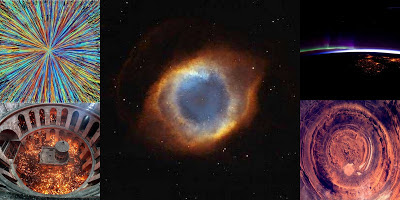„вече се носи
глас от Дан,
и гибелна вест –
от Ефремова планина”
[Пр.Иер. 4:15]
приписвана от мнозина на св. Никодим Светогорец
Превежда се от английски
(от превод от гръцки
[на английски] от Джордж Ралис)
Отче, благослови!
Излезте напред, синове на Светлината, чуйте от блажения и възхваляван глас
на Спасителя, който ни казва: „
дойдете вие,
благословените на Отца Ми, наследете царството
” (небесно) [
Мат. 25:34].
Внимавайте, братя мои, та никой да не бъде лишен от блаженото наследство, тъй
като вече се приближи. Като Светлина от Светлина, Христос слезе при нас; Той ни
доведе до Светлината. Той слезе при нас и се уподоби нам, за да ни уподоби Нему.
Безсмъртният слезе при смъртните, и когато Той ги направи безсмъртни, Той се
възнесе отново при Отца Си. Той идва със славата на благословения Си Отец, за
да съди живите и мъртвите. Пътят ни е пълен със светлина и слава, та ние да можем
да вървим в светлината към Отца.
Хайде, възлюбени, нека вървим по пътя, който Господ ни показа, та с радост да
достигнем Неговото Царство. Нека вземем елей в съдините си, братя, нека запалим
кандилата си и да не заспиваме, защото очакваме да посрещнем Господ от Небесата.
Затова нека не ни се доспива, та кандилата ни да не загаснат. Ето, Той
пристигна, нощта премина и денят се приближи, синове на светлината, вие
достигнахте Светлината; излезте с радост да посрещнете нашия Господ! Покажете Му
добродетелите си, предложете Му приношение и чиста вяра.
И тъй, братя, не се отпускайте, нито заспивайте, но нека окото на душата ви
да е фиксирано върху тази небесна красота, та да станете наследници на Отца и
сънаследници на единородния Син Божий. Хайде, нека захвърлим всяка грижа и
тревога на днешния век, и нека работим за Господа. Защото, ето, онзи вик прозвънтя
силно и ясно, в който се казва: „
ето, Младоженецът иде, излизайте да Го посрещнете
” [
Мат 25:6]. Всички вие, които Го обичахте, бъдете готови да Го видите в Неговата слава – защото Той ще ощастливи всички, копнели за Него, в онази неизказана младоженческа стая, – нека сме готови, братя, защото не знаем, кога ще дойде Господ. Този ден идва като крадец в нощта, и също както светкавицата е пребърза, такова ще е и идването на Господ, защото тръбата ще зове, и земята ще се разтресе до основи, а небесата със силите си ще се поклатят и всички мъртви ще възкръснат. Горко ми! Горко ми! Неописуем страх и трепет ще обземе хората в оня час. Всичко що диша ще потрепера в оня час. Слънцето ще потъмнее, луната ще се замъгли и всички стихии ще се променят. Реки ще пресъхнат и градушка ще падне с голям тътен; смъртоносни и отровни червеи ще избликнат и ще искат да ядат плътта на грешници; най-тъмни бездни ще се разкрият и ще приемат осъдените, и кой би могъл да разкаже, възлюбени, всичките скръбни неща, които навсякъде ще се случват на окаяните грешници? А праведните ги очаква цялото радостно щастие. Горко! Горко! тогава на поробения, защото – като стои със скръбно лице и обезсърчен – той ще бъде презрян и обиждан от ангелските сили и дори не ще може да повдигне очите си, заради своето безумие. А оттам – влачен, вързан и бит, той ще бъде предаден на страховити ангели, които да заведат него и демоните, които са го измамили, за нескончаемо наказание, за унищожаване на тялото, вършило лошотии, и за изгарянето на душата, предала се на злини. И той ще бъде поставен в безконечно наказание.










